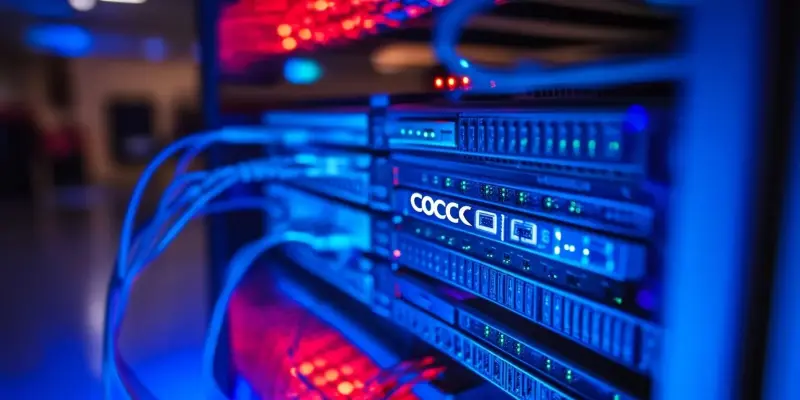Recent advancements in cybersecurity threats have brought to light a critical vulnerability identified as CVE-2024-20439, targeting Cisco’s Smart Licensing Utility.This vulnerability is particularly alarming as it permits unauthenticated attackers to gain remote access to vulnerable Cisco devices using an undocumented static administrative credential. For exploitation to occur, the Smart Licensing Utility needs to be actively running. The situation necessitates urgent attention from network administrators and security professionals to safeguard affected systems.
The Discovery and Confirmation of Cyberattacks
U.S. Cybersecurity and Infrastructure Security Agency’s Involvement
The U.S. Cybersecurity and Infrastructure Security Agency (CISA) has acknowledged the severity of CVE-2024-20439 by adding it to their Known Exploited Vulnerabilities (KEV) catalog. This inclusion underscores the active exploitation of this flaw and prioritizes it as a significant threat. The vulnerability was initially disclosed and patched in September 2023 as part of a broader security update. This update also included another vulnerability, CVE-2024-20440, which addressed information disclosure issues within the same utility.Cisco’s confirmation of exploitation attempts came in March 2025, as reported by the Cisco Product Security Incident Response Team (PSIRT). These attempts were corroborated by reports from the SANS Internet Storm Center, indicating part of a smaller botnet’s activities. The escalation of exploitation activity in mid-March, with a notable peak in January, highlights the ongoing and pervasive threat CVE-2024-20439 poses.CISA’s documentation reflects ongoing monitoring efforts, though there remains some uncertainty about the vulnerability’s use in ransomware attacks.
Enhanced Exploitation Activity
The recent surge in attempts to exploit CVE-2024-20439 has drawn significant attention from cybersecurity experts.Johannes Ullrich, a seasoned researcher from the SANS Internet Storm Center, has been instrumental in providing insights into these activities. Ullrich noted that botnet activities have primarily driven recent exploitation attempts, drawing further scrutiny to the vulnerability. These insights have reinforced the need for CVE-2024-20439’s inclusion in the KEV catalog, validating concerns about the public’s ease of access to exploit details.The risks associated with static admin credentials are highlighted by the public disclosure of such vulnerabilities through security researchers’ blogs. This exposure significantly raises the stakes, showcasing the potential for backdoors into systems if these credentials are not managed properly. Consequently, it is imperative for organizations to comprehend and address the ramifications of static credential exploits to fortify their security postures adequately.
Cisco’s Response and the Broader Implications
Monitoring and Reporting by Cybersecurity Experts
Cisco’s challenge in managing this vulnerability has been pronounced, given the static nature of the administrative credentials embedded in the Smart Licensing Utility. The expertise provided by cybersecurity professionals has been critical in documenting and understanding the vulnerability’s ramifications. Detailed monitoring and timely reporting by these experts emphasize that CVE-2024-20439 is not merely a theoretical risk but presents real and immediate danger to affected systems.The role of cybersecurity analysts like those at the SANS Internet Storm Center cannot be overstated. Their rigorous documentation and insightful analysis have brought to light the persistent threat landscape associated with CVE-2024-20439. Their findings have been pivotal in illustrating the vulnerability’s exploitation trends, providing a roadmap for mitigating similar threats across other platforms.
Securing Network Infrastructures
The broader implications of vulnerabilities like CVE-2024-20439 extend beyond Cisco devices. They serve as a cautionary tale for implementing secure authentication practices across various systems. The public availability of such a vulnerability stresses the necessity for rigorous security protocols and heightened awareness among network administrators.The exploitation of static admin credentials, as observed in this case, underscores the need for dynamic and secure credential management systems.
Organizations are advised to undertake thorough audits of their security practices, particularly relating to handling administrative credentials. Employing best practices in credential management and integrating multi-factor authentication mechanisms can significantly reduce the risk of unauthorized access. Additionally, regular updates and patches should be prioritized to address identified vulnerabilities promptly and effectively.
Summarizing Key Takeaways
Recent advancements in cybersecurity threats have surfaced a critical vulnerability labeled CVE-2024-20439, specifically targeting Cisco’s Smart Licensing Utility. This vulnerability is particularly concerning as it allows unauthenticated attackers to remotely access compromised Cisco devices through an undocumented static administrative credential.For this exploitation to be feasible, the Smart Licensing Utility must be actively running on the device.
Given the severity of this issue,it is imperative that network administrators and cybersecurity professionals prioritize addressing this vulnerability to secure their systems. Failure to do so could result in unauthorized access to crucial systems and potential breaches of sensitive data.Organizations utilizing Cisco’s Smart Licensing Utility need immediate corrective measures to fortify their networks. Regular updates and patches from Cisco, along with robust security practices, should be closely adhered to in order to mitigate the risks associated with this significant vulnerability.

